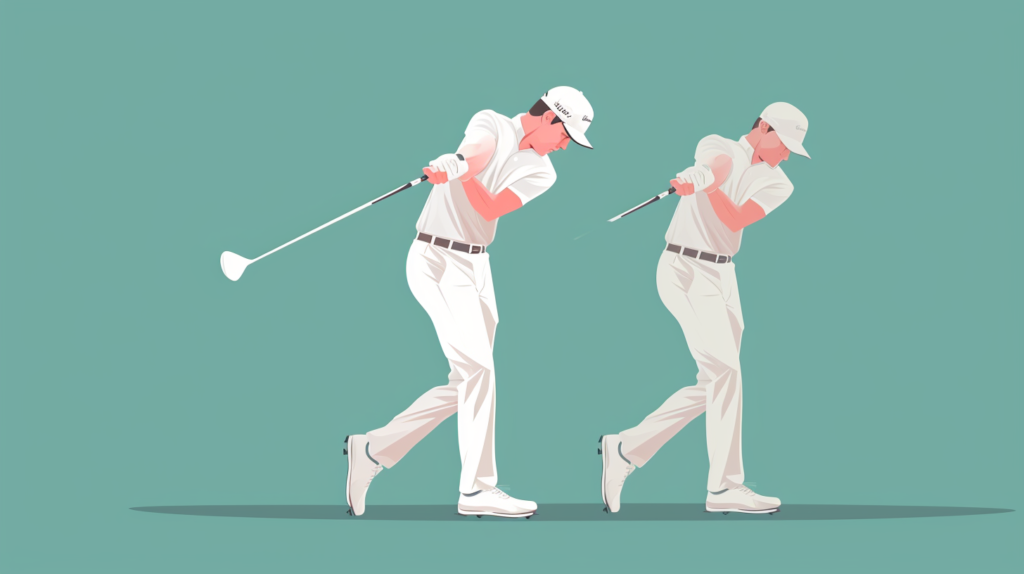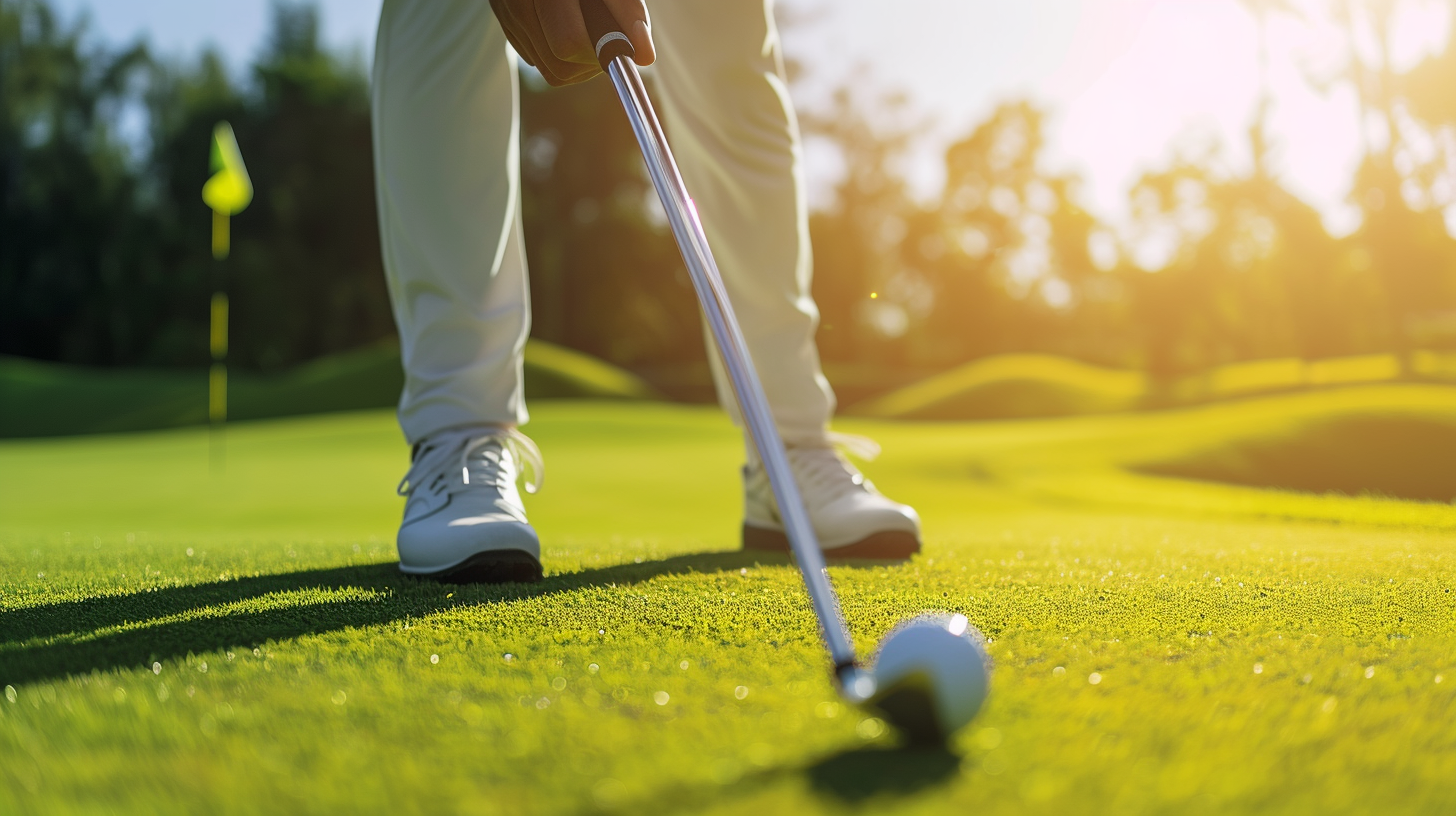Struggling with wayward shots and ballooning scores? Revisiting golf grip fundamentals provides the bedrock for excellence.
Mastering essential golf grip and setup protocols along with matching equipment to your swing lays the groundwork for consistency and better scoring on the course.
Let’s dive into ideal hand positioning, posture alignment, equipment fitting and more to ingrain excellent fundamentals.
Proper Grip Fundamentals

The golf grip refers to how your two hands hold onto the golf club handle. It may seem insignificant but how you grip the club greatly affects swing mechanics, ball-striking consistency and shot control.
Taking the time to learn proper fundamentals pays tremendous dividends down the road. There are a few common types of golf grips to consider initially.
The overlapping or “Vardon” grip involves positioning the small finger on your trailing or top hand so that it overlaps or lays over the space between index and middle finger on your lead hand.
This helps fuse the two hands together promoting unity throughout the swing motion. It works well for most players.
The interlocking grip intertwines the pinky finger of the trailing hand with either the index or middle finger of the lead hand. It creates a solid linkage helping control the clubface through impact.
Lastly, the baseball style grip simply requires placing both hands together on the club handle without intertwining any fingers. Choose the style providing the greatest comfort and control.
Experiment to determine what interlocks your fingers and hands most effectively.
With your grip style selected, ensure proper hand rotation by positioning both thumbs straight down the middle of the shaft. This alignment allows the thumbs to naturally rotate open on the backswing and into impact promoting square contact.
Determining proper grip pressure relates very closely to reliable hand rotation. Holding the club too tightly restricts proper unhinging of the wrists and forearms reducing club speeds.
Conversely, an overly loose grip leads to inconsistent strikes and reduced control.
Aim to hold the club firmly but not tightly in the fingers and palms allowing the wrists to hinge then release through impact. New players tend to use excessive grip pressure stemming from tension so focus on keeping the grip light and fluid.
Brushing the clubhead lightly through impact without losing control develops ideal pressure and feel. Grip pressure directly impacts both swing tempo and clubface control.
Now to position the hands properly on the grip for ideal alignment. Start by holding the grip with your lead hand only, extending the club straight out at chest level, keeping the grip diagonally across the pads of your fingers.
Allow your lead hand thumb to curve slightly down the left side of the shaft. The clubface should aim squarely down your target line once gripped.
Now wrap your trail hand fingers over your lead thumb with the lifeline on that hand directly beneath your lead thumb.
The lead hand palm and thumb angle the clubface at address while the trail hand works primarily to rotate and support. Study your grip in a mirror while perfecting hand positioning for proper rotational movements through impact.
Keep lead wrist flat with grip diagonal, trail wrist slightly cupped, both thumbs pointing down the grip. Repeat precision setup until it becomes natural muscle hand sizes differ memory.
Body Alignment and Posture

With grip fundamentals now mastered, extending those principles to overall setup and posture ensures consistency shot to shot. Much relates to balanced distribution of your weight over the balls of your feet initially.
Position feet about shoulder width apart with lead foot opened slightly towards the target and trail foot straight or closed up to 30 degrees. Allow knees to relax with a slight inward curve rather than locking them straight which restricts necessary rotational movements.
Make practice swings staying balanced before addressing the golf ball.
Proper spine angle and tilt require positioning as if sitting back into an imaginary chair to unlock hips and knees then tilting from that waist position. Allow arms to hang freely downwards creating the desired rounded shoulder look rather than arms separated from body.
Place golf ball then grip club before reconfirming balanced weight distribution between lead side and trail side. Maintaining rotational balance while coiling on the backswing and releasing through the ball proves essential to solid ball striking.
As you coil up then unwind through impact, the primary goal involves keeping head still with spine angle angle consistent rotating instead around fixed axis. Any swaying off the ball or rolling up onto toes results in inconsistent strikes.
Focus on firmly posting lead side during the entire backswing and downswing. Practice swings with lead foot only contacting turf to ingrain centered balance and weight transference paying attention to corresponding shoulder turn and arm positioning.
Videotaping your setup confirms solid fundamentals.
Many new players struggle with posture fundamentals by either bending too far forward from the hips or keeping spine overly vertical. Find optimal mid-position allowing arms to hang freely with shoulder width stance.
Use mirrors to observe and correct rounded shoulders or uneven head tilt. Solid fundamentals must embed deeply to sustain proper motion when addressing and striking golf balls.
Rushing usually leads to collapsing posture under pressure so dedicate deliberate practice.
Clubface Control

The orientation of your clubface the instant it contacts the golf ball obviously plays the most significant role in shot accuracy and quality ball flight. Even minute deviations left or right of your target line lead to missed fairways, greens and undesirable scoring outcomes.
Mastering fundamentals that control the clubface angle through impact proves essential to shotmaking precision. It requires firmly setting both posture and grip prior to initiating the backswing while maintaining that stable base moving into the downswing and strike.
Start by aligning your body down the target line first with feet, knees, hips and shoulders before placing clubface directly behind the golf ball also aimed at your target.
Study ball position and clubface alignment together from both behind the shot and laterally to confirm accuracy. Use an intermediate target like an area of fairway or portion of green for alignment.
Having an alignment aid extending down the target line serves as an excellent visual checkpoint.
With alignment now sound, maintain wrist control to keep clubface square takeaway through early stages of the backswing. Hinging while keeping the triangle formed with your arms and shoulders intact prevents the clubface rolling open prematurely.
Any wrist breakdown too soon in the backswing triggers compensations later downswing when hand-eye coordination diminishes. Golfer self-video aids identifying deficiencies getting clubface back on plane before sequence compounds.
Transitioning between backswing and downswing requires retaining optimal wrist angle while making direct path change. Contact point should match setup alignment for center-face impact.
Called “covering the ball”, slight downward blow with trailing wrist bowed transfers maximum power through the ball at low point in arc. Durable practice facility balls allow ingraining this descending blow by sweeping across turf without twisting clubface.
Mirrors confirm maintaining posture angles with clubface aimed down target line.
Grip Consistency

Maintaining a consistent golf grip means precisely repeating the exact fundamentals regarding palm placements, finger positioning and overall pressure each swing. Hand sizes differ requiring initial comfort assessment.
Once established, ingraining reliable muscle memory depends greatly on replicating the entire grip routine shot to shot. It represents one of few swing factors completely within conscious control making consistency both realistic and pivotal.
After shot visualization and setup adjustments, step into each shot by going through the exact palm placement, finger wrapping and locking steps established earlier until natural feel sinks in.
Grip changes may arise like strengthening or weakening hand rotation when manipulating shot shape. Adjust only one element at a time to retain overall positioning and pressure while noting ball flight changes.
Therapeutic training balls and grips build finger dexterity and strength when needing refinement.
Players getting quick with grip routine or not concentrating fully on precise setup often fight flaky ball striking and contact inconsistency caused by breakdowns. If fundamentals feel foreign every address, expecting different results proves unrealistic.
Mirror feedback helps prevent backsliding while lingering over each step forms needed “grip patience”. Make unconditionally sound fundamentals priority through determination and conscious effort regardless how many range buckets hit.
Ingraining properly ultimately accelerates overall swing repeatability promoting better scoring.
Certain advanced players train properly setting up then posture without even contacting balls to further embed key sequences into muscle memory. They reserve swings only once everything locks intuitively in place dependably.
Building this conditioning along with external feedback repeatedly lays the ground floor. It equates to mastering key fundamental components individually before assembling them together into the full motion.
Approaching the process through incremental achievement ensures stronger overall competency.
Custom Fitting

Beyond nailing down essential golf grip and setup fundamentals, getting custom fit for your equipment especially club lengths and grip sizing better matches gear to your physical stature and swing technique.
Most golf club component companies offer grips ranging from undersize to midsize, oversize and jumbo to fit a wide range of hand sizes. Standard grips work well for average male hand length.
Determining appropriate grip diameter depends more on finger length and palm width rather than simple hand size.
Grip comfort directly translates to greater wrist and forearm control through impact. Grips fitting too small or large hinder proper hand rotation, tempo and clubface management degrading ball striking consistency.
An experienced club-fitter assesses multiple data points starting with your proper grip style, hand measurements and finger spacing while observing overall wrist movement freedom checking both interlaced tightness and pinky-to-thumb spread.
Custom fitting goes well beyond just grip style and size alone. Getting properly fit for shaft length proves equally vital for solid fundamentals.
Here the key measurement involves wrist height from ground while holding a club properly. Taller players typically require longer shafts while shorter builds gravitate toward standard lengths.
Custom fitting allows evaluating posture and spine angles during swings with various shaft lengths checking down-the-line view consistency.
Matching sets get checked for lies, lofts and offset. New adjustable hosel technologies facilitate dialing in ideal measurements.
Shafts offer options in weight, torque, flex and tip behavior. Hitting actual shots during fittings while observing ball flights dial in best performance.
High speed video capture, strike plate sensors and launch monitors quantify true distances. Investing in detailed custom fitting especially for new players pays dividends in accelerated skill progression and enjoyment.
Building clubs aligned with your physical attributes and capabilities really maximizes comfort and control while ingraining the fundamentals. It positions your swing on the best possible foundation for peak performance.
Select an expert custom club-fitter willing to spend meaningful time perfecting your fundamentals during the process. Stronger fundamentals translate into better golf.
Conclusion
Mastering how to properly hold a golf club establishes the foundation for consistent ball-striking and lower scores. From proper grip technique to ideal setup posture and alignment, dedicating practice towards ingraining the fundamentals pays tremendous dividends.
Work sequentially through grip, stance and clubface control while allowing muscle memory to cement. Getting custom fit for clubs tailored to your swing and physical build allows fully leveraging these fundamentals.
Invest the requisite time and effort towards proper skills training for peak performance. With sound golf grip fundamentals, on-course success remains firmly within your grasp.



